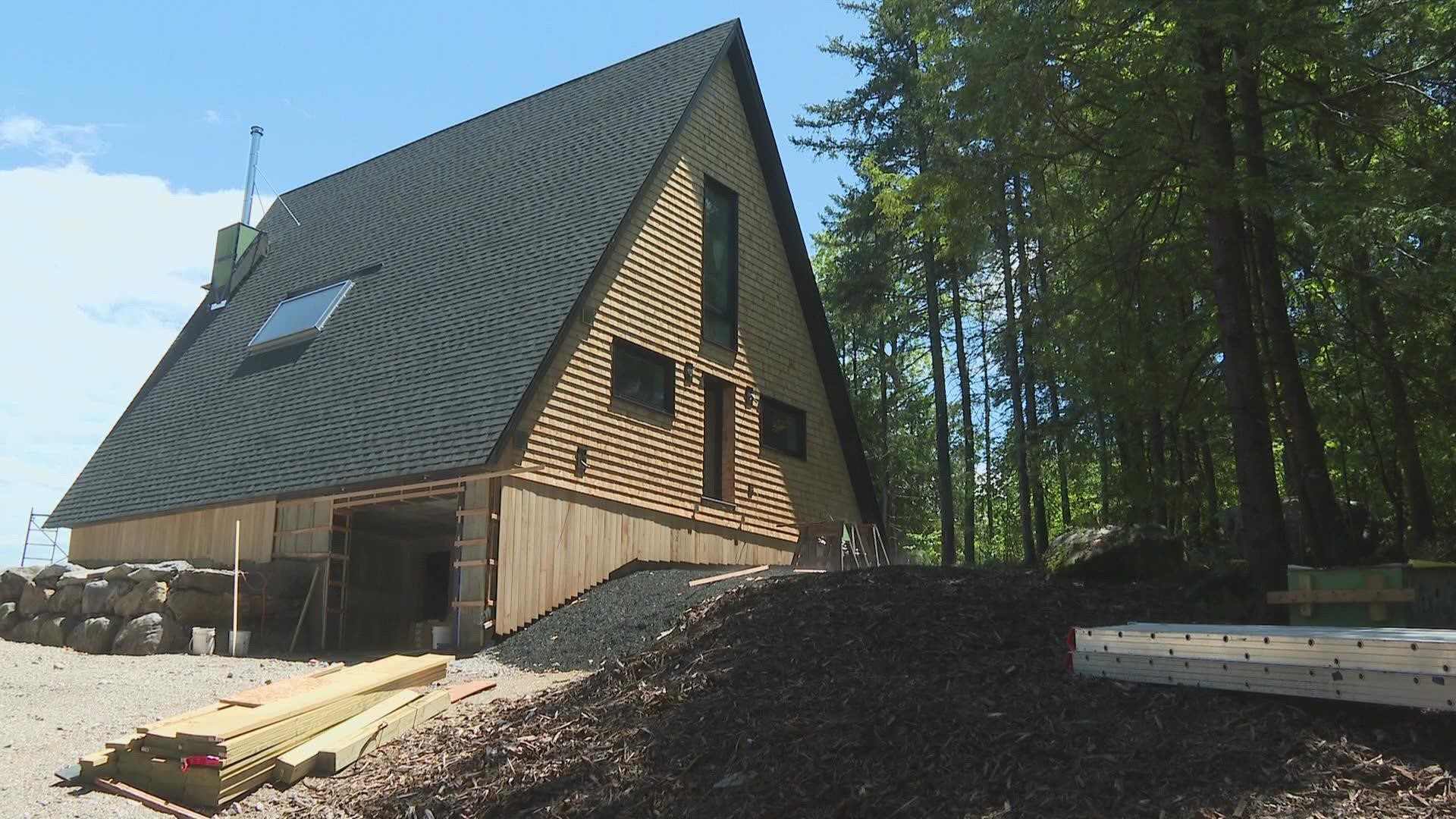BETHEL, Maine — Stepping between cordless drills and empty buckets, Anna Sysko walked through a former Key Bank in Bethel, laying out her vision for a new business.
“It will be very much a bakery and not a fakery,” Sysko said. “You'll know it when you walk in.”
With her business partner, Sysko plans to open Gemini Cafe & Bakery in Bethel.
They plan to serve made-in-house bagels and pastries and create a space for people to gather in the heart of the Oxford County town. But beyond the menu and the décor, energy use is top of mind in this project.
“Bakeries and cafes, restaurants in general, are high energy consumers,” Sysko said.
With an eye to easing energy usage, Gemini's founders decided to go with a less conventional style of construction.
The method is called passive housing, and it aims to tightly control heat and moisture movement. It can involve techniques that include super thick insulation and triple-pane windows, tightly sealing the building to stop moisture movement, and using a ventilation system that recovers heat.
passivhausMAINE is a nonprofit that advocates for this style of construction. Executive Director, Naomi Beal says the difference in energy consumption is stark.
"Passive house represents about 80 percent reduction of energy usage compared to what we might call conventional construction,” Beal said.
The tradeoff is a higher initial price tag.
Passive house building methods cost about 5 percent more than conventional techniques, Beal said, but over time translate to lower monthly energy bills that offset the initial investment.
“You get that back so quickly in your operations,” Beal said.
Advocates say it also moves Maine toward its goals of cutting greenhouse gas emissions 80 percent by 2050. It does so in two ways: First by using less energy to heat and cool buildings, and also by using building materials that put less carbon into the atmosphere.
Anna Heath, a project manager for construction company Maine Passive House, says focusing on how materials are created and how much carbon is released in the process is an important shift in mindset.
"There's a lot of material that goes into these buildings,” Heath said. “The embodied carbon is how much carbon emission is associated with every single step in that material's life.”
Lightening the impact her business has on the climate is also a priority for Sysko. She says opening a business is a long-term commitment and choosing an energy-efficient build is another way to invest in the future of her town.
"Consuming energy, if you can do it smartly in a climate-forward way, it just seems like the right way to go," Sysko said.

